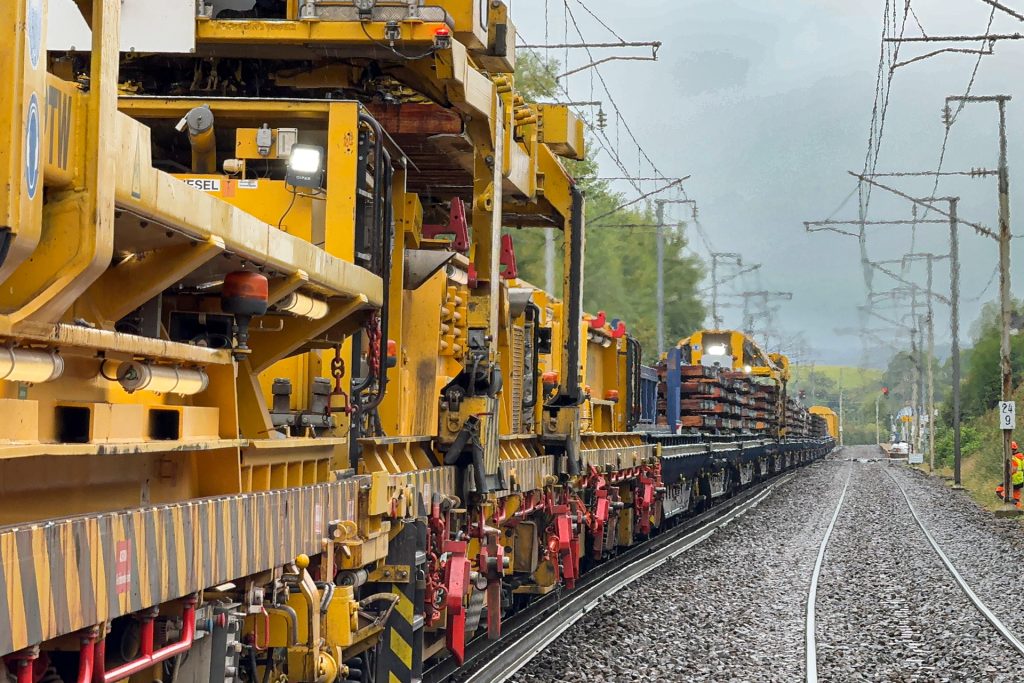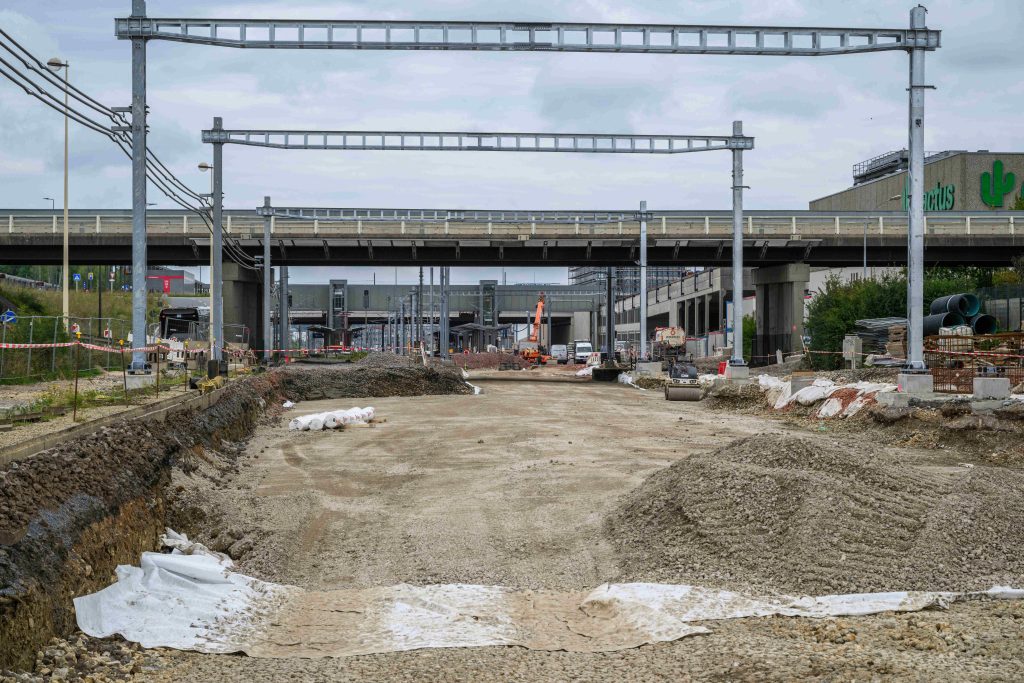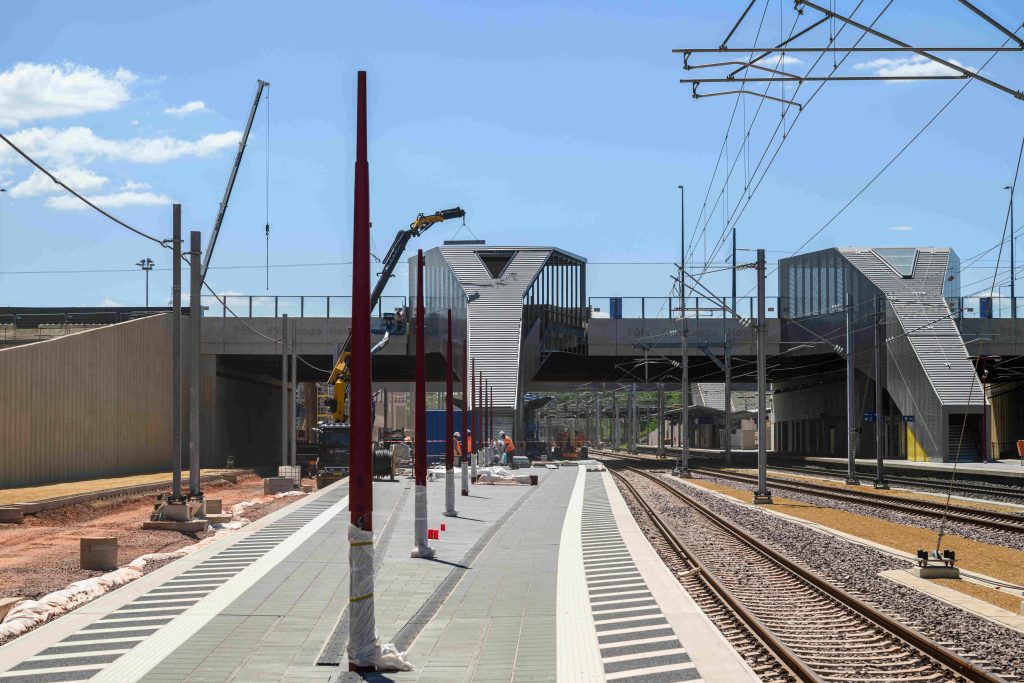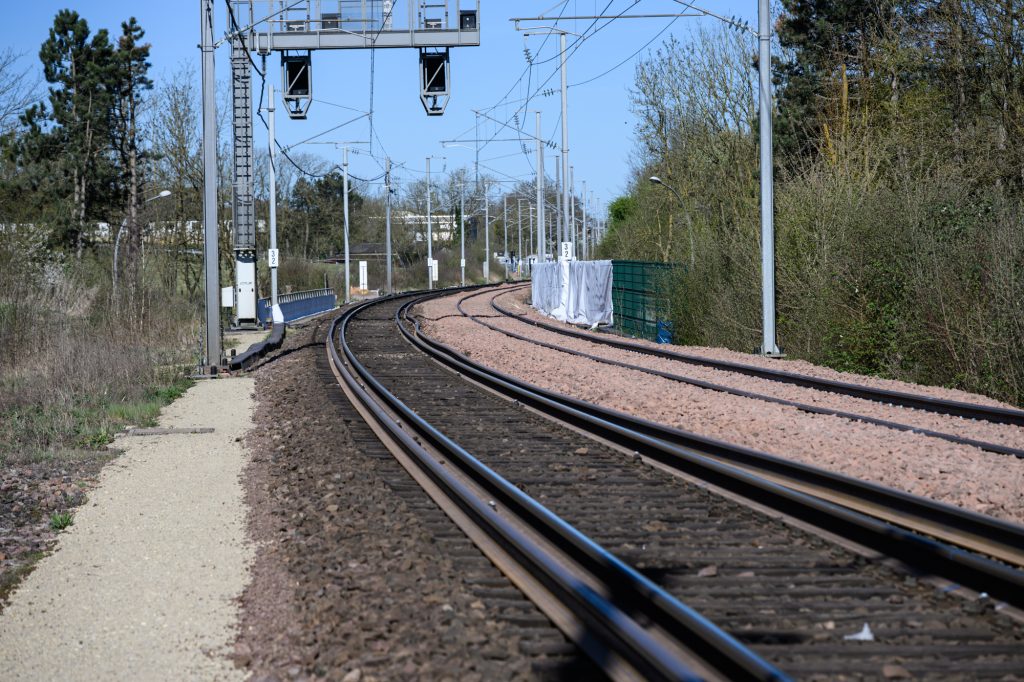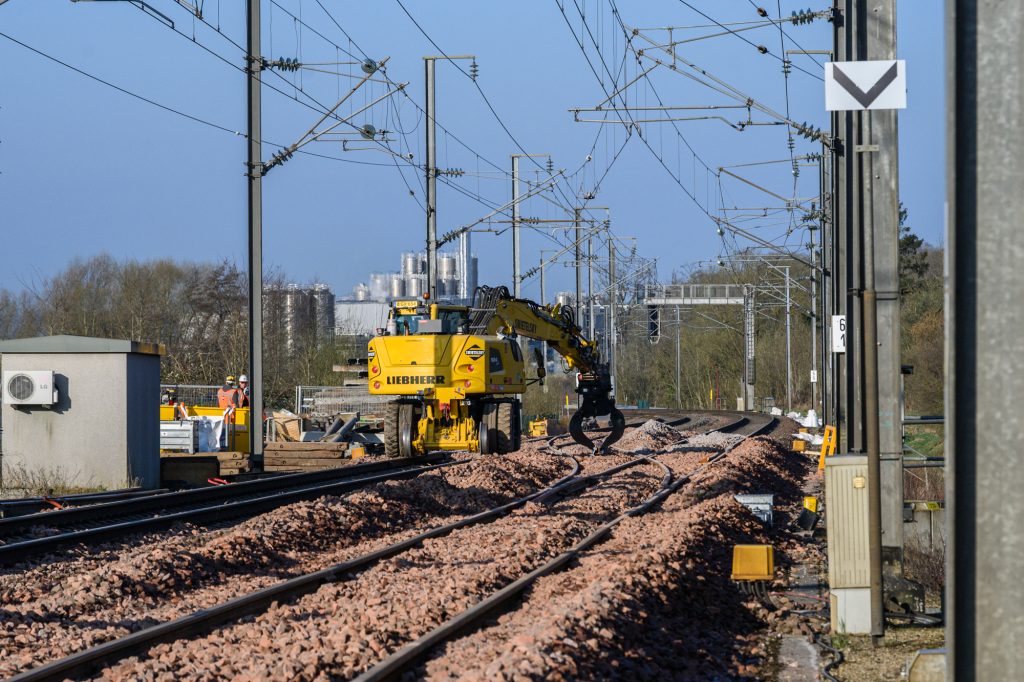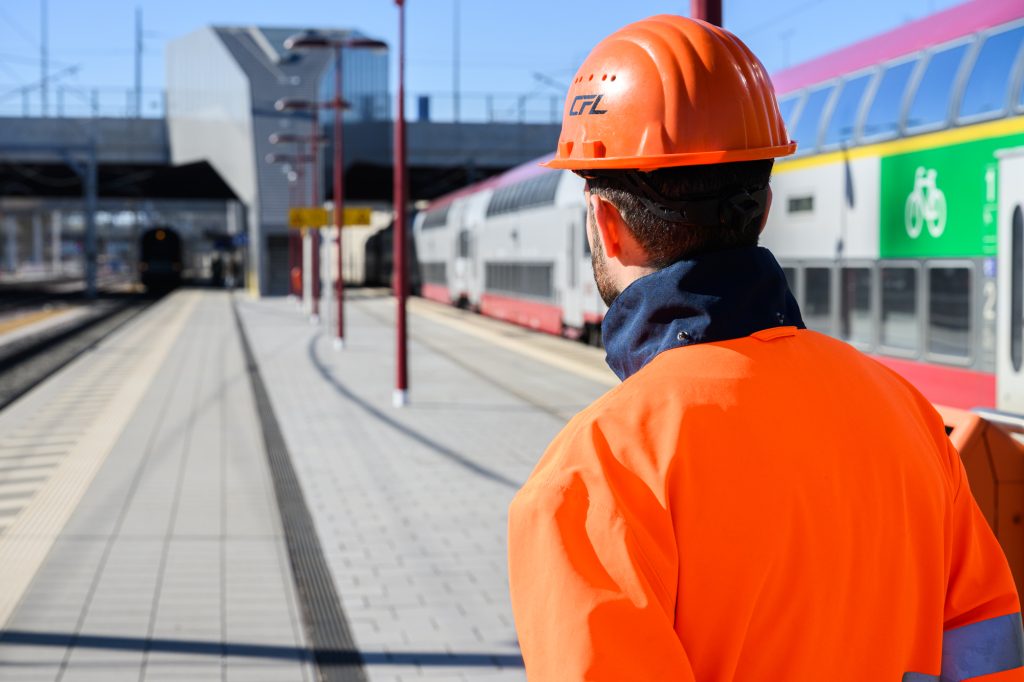
New concrete sleepers placed at a pace of 200 per hour
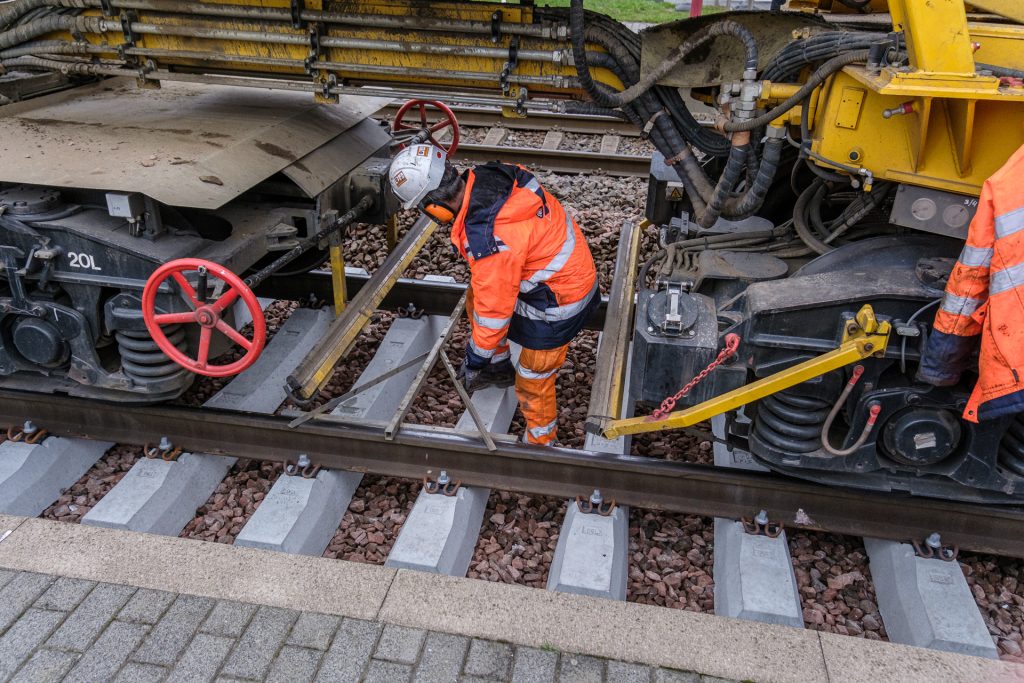
Lifting, removing, replacing and adjusting. On Friday 8 November 2024, the renewal train operated by an external company on behalf of the CFL was making precise progress at the Dippach-Reckange rail stop. At the heart of the operation: the replacement, as a precautionary measure, of concrete sleepers with a manufacturing defect causing a chemical phenomenon known as “alkali-silica”.
To guarantee the safety of their customers and staff, and to ensure that their equipment is in perfect working order for train traffic, the CFL have decided to replace some 10,000 concrete sleepers over a total length of six kilometres on the Luxembourg – Dippach-Reckange – Rodange – Athus / Longwy lines.
This highly technical project relies on the expertise and involvement of both CFL specialists and an external company at several crucial stages.
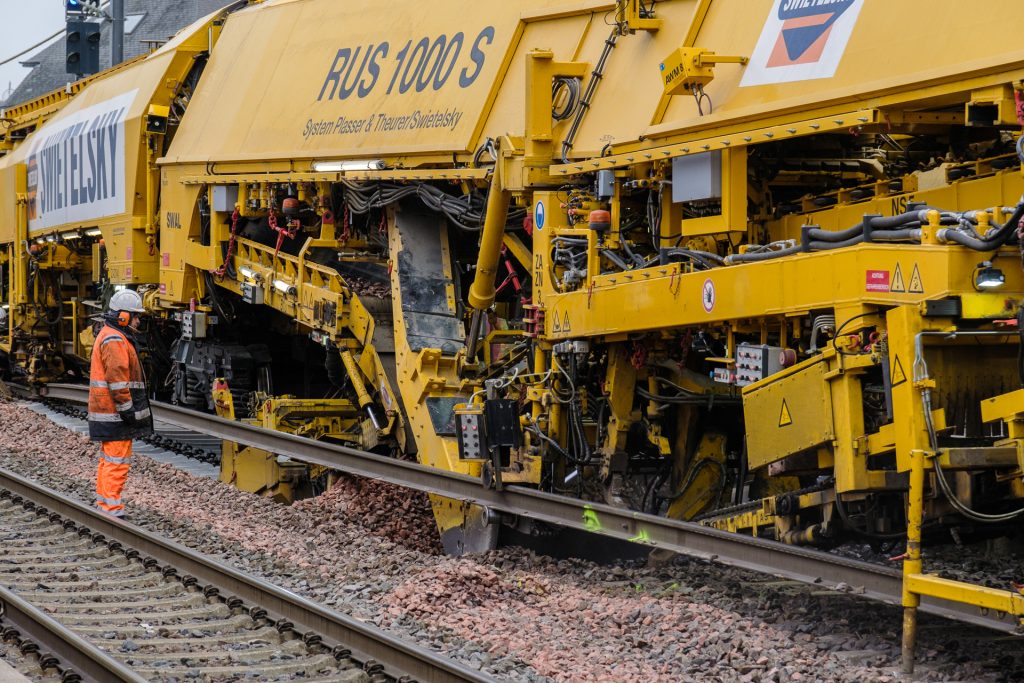
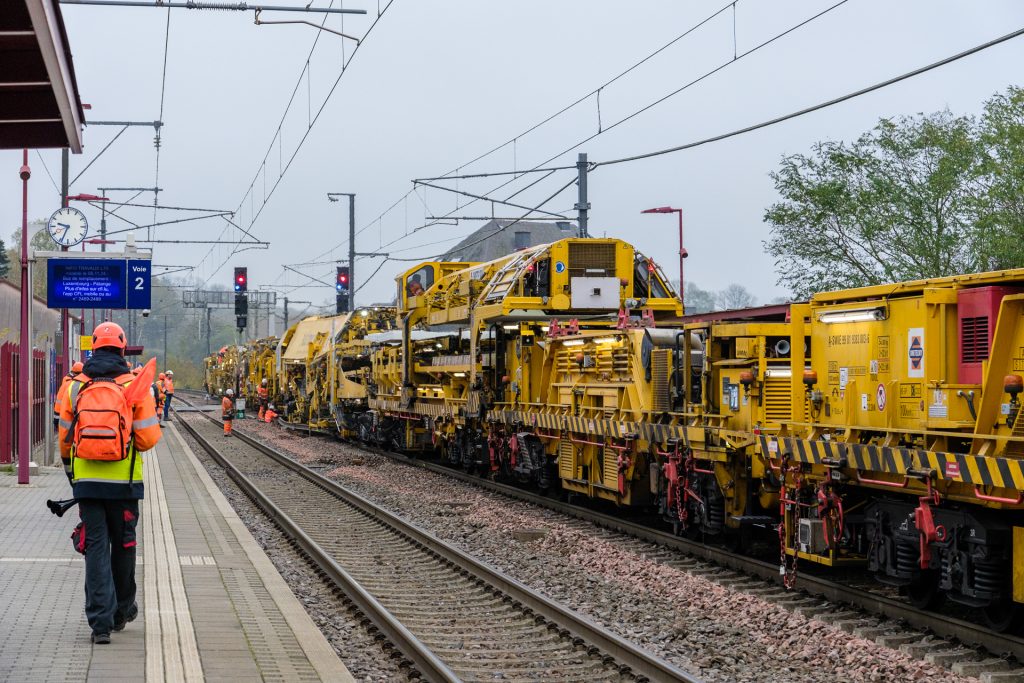
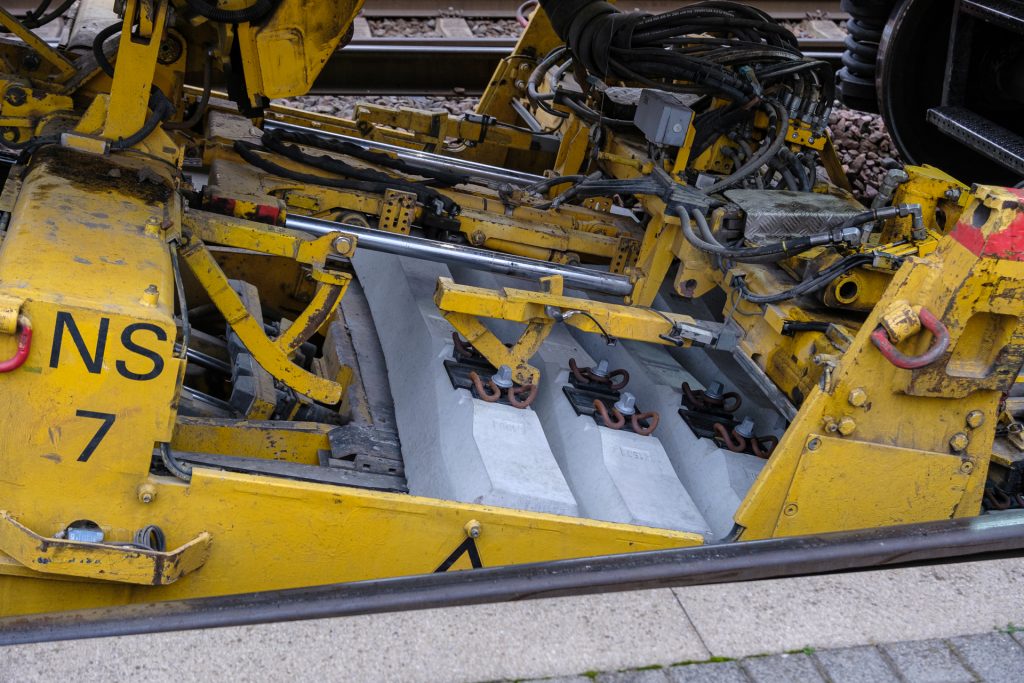
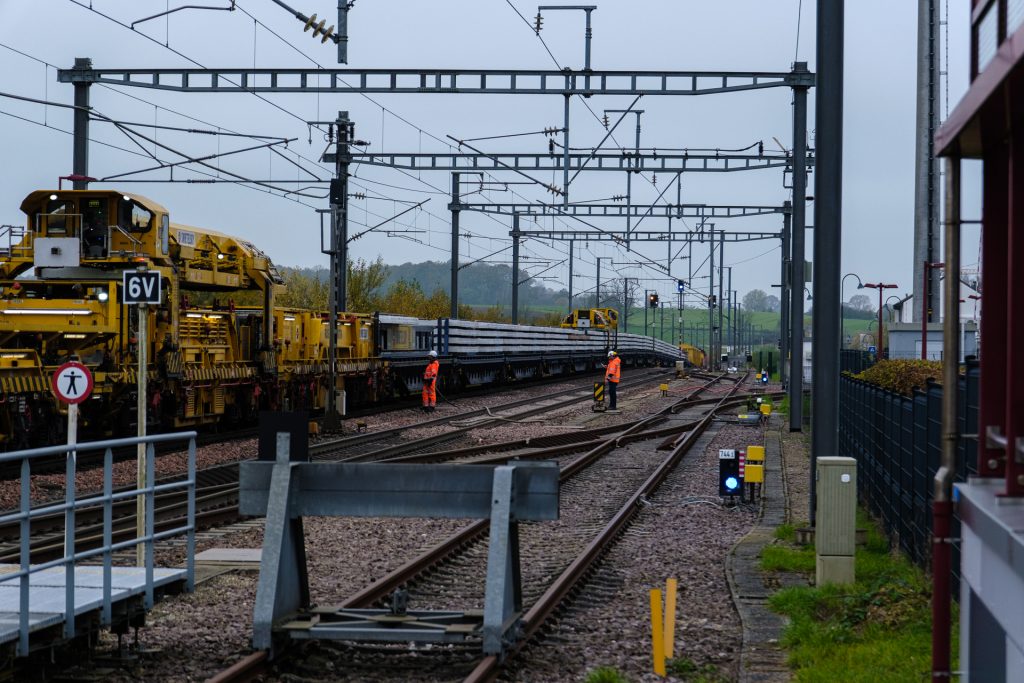
This challenge has been carried out in stages since November 1 and until November 13, 2024, depending on the availability of specialised equipment operated by a team with well-oiled expertise and skills that are rare in Europe.
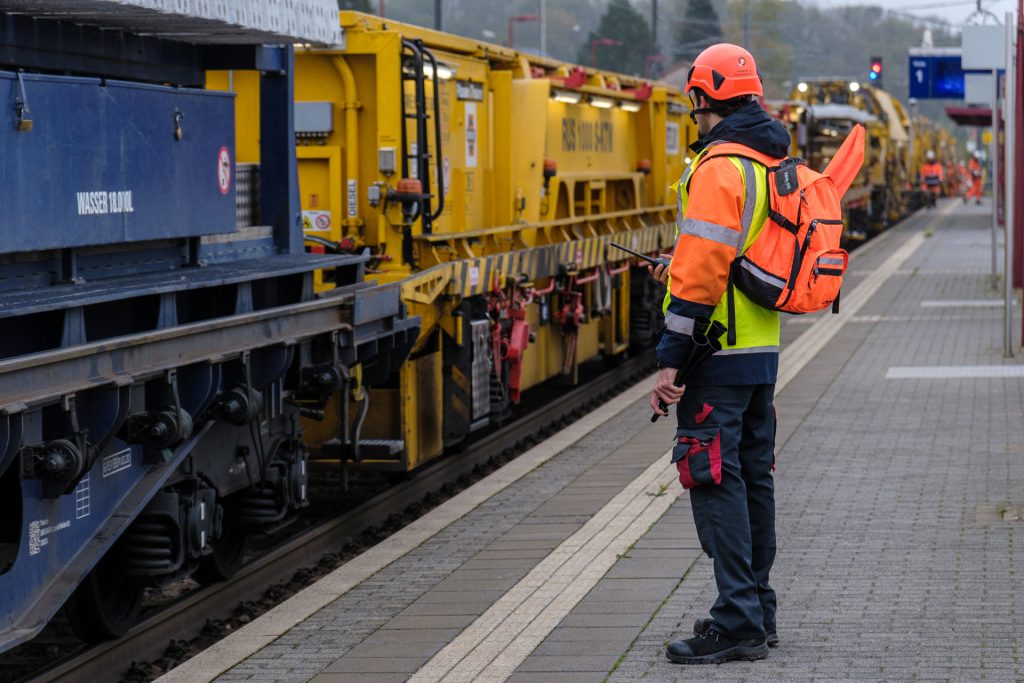
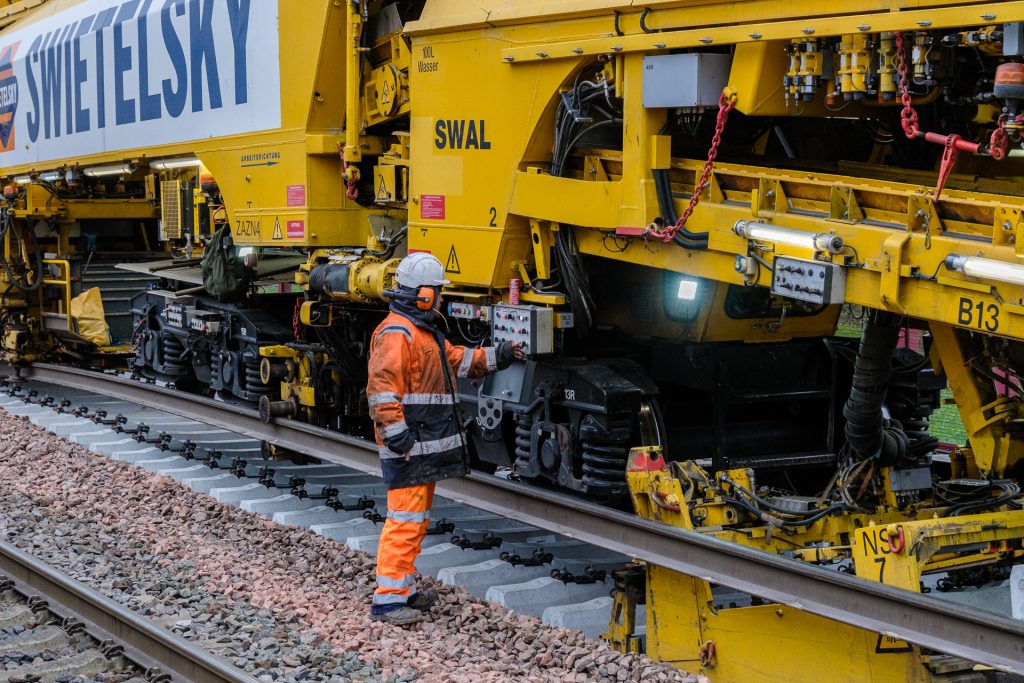
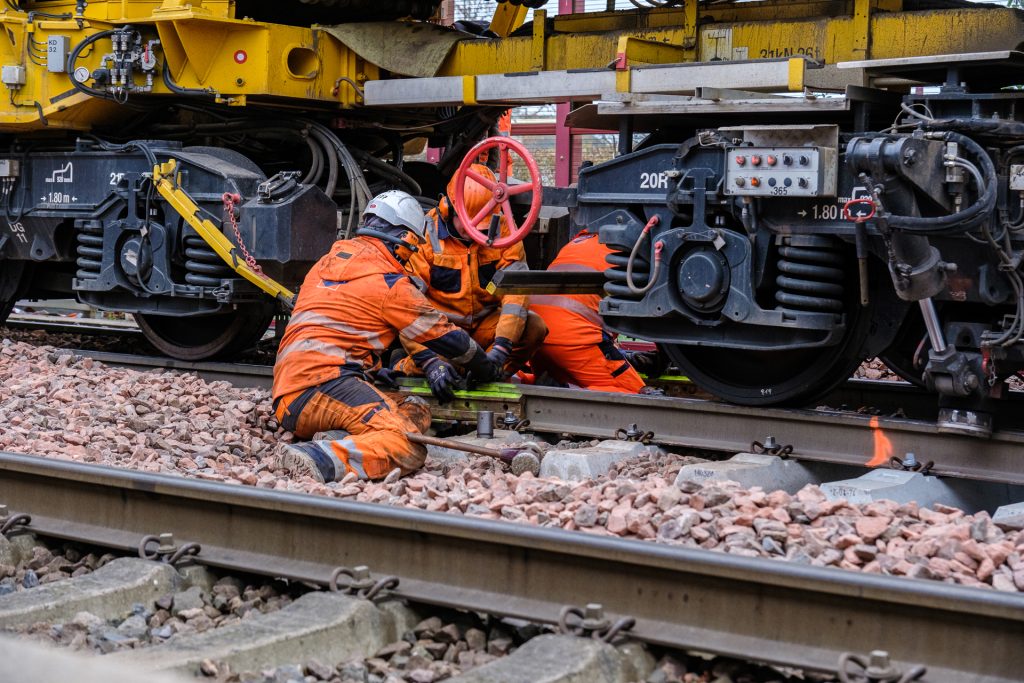
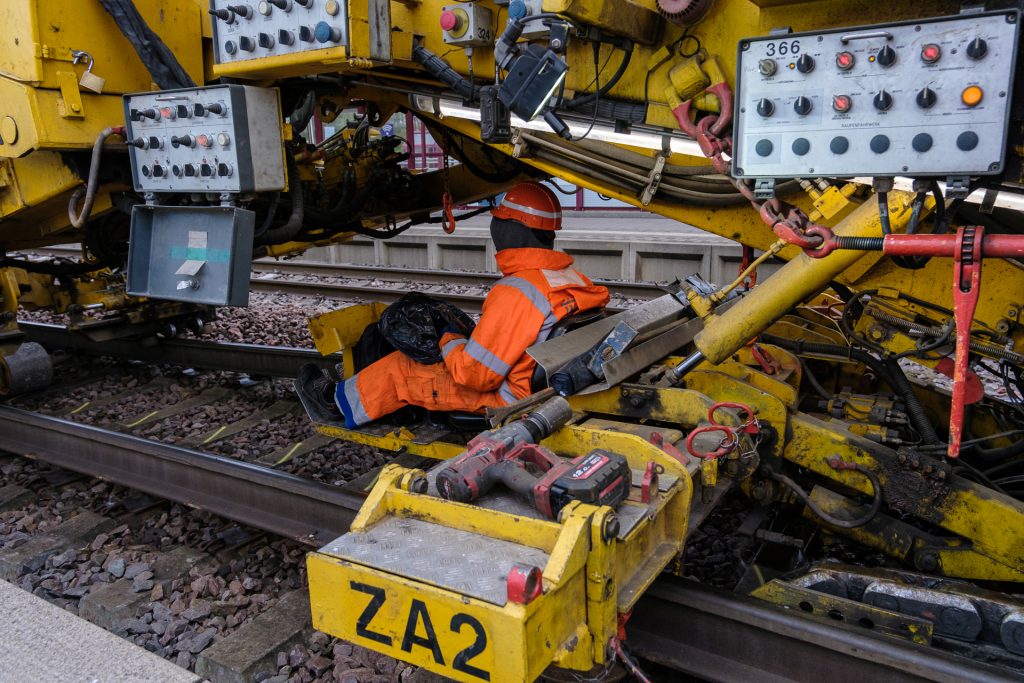
It should be noted that on the weekend of 5 and 6 October 2024, the CFL had already replaced some 750 sleepers on the sections not affected by the renewal train.
Thanks to its knowledge of the terrain, railway techniques and trades, and appropriate coordination between the parties involved, the CFL ensured that all the work was carried out as smoothly as possible, keeping the impact on customer service to a strict minimum. Neighbouring customers at the scene of the replacement work in Dippach-Reckange, standing at a safe distance, watched the back-and-forth movement between the removed sleepers and the new ones being installed.
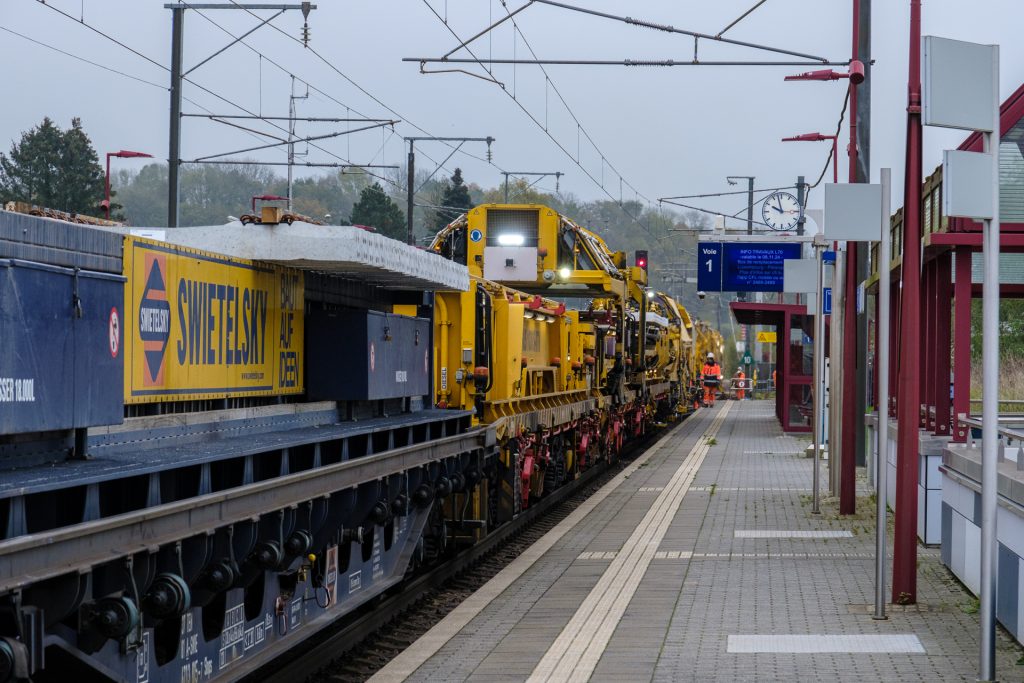
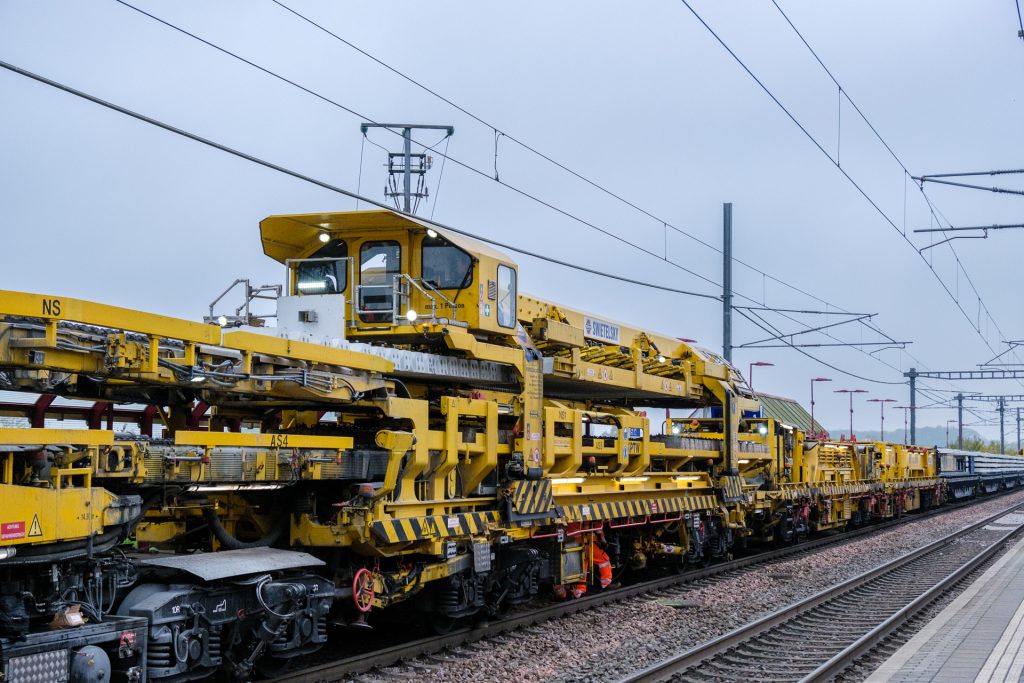
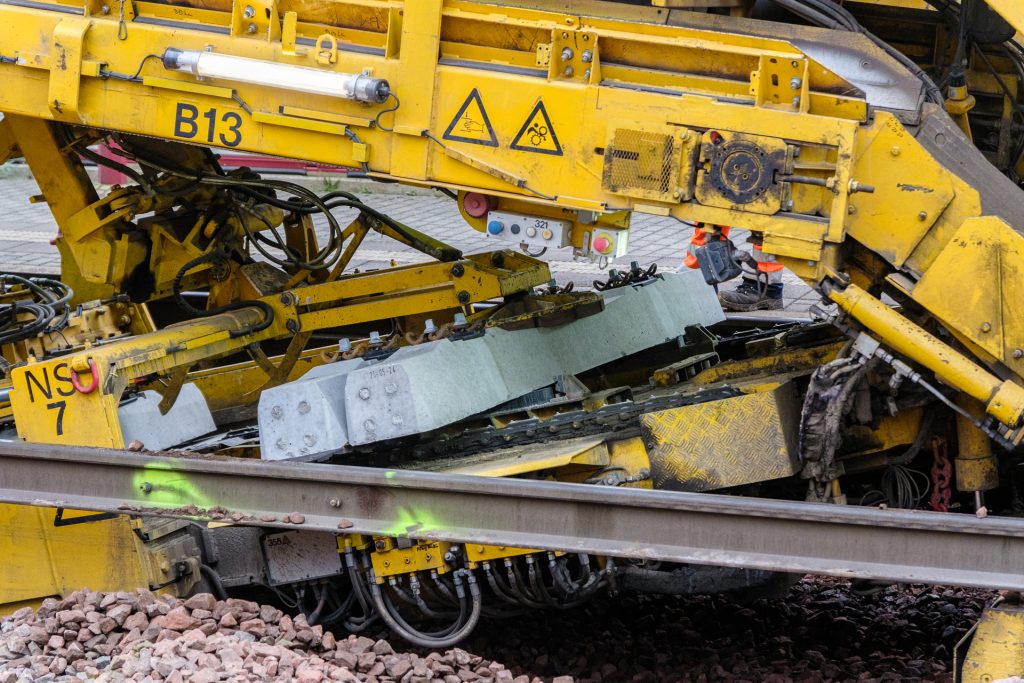
Some 200 sleepers were replaced on average every hour. A respectable rate when you consider that each concrete sleeper weighs 300 kilos, compared with 80 kilos for the wooden sleepers on which the rails historically rested on the 630 km of Luxembourg’s rail network. With a sleeper being laid every 60 centimetres, it is estimated that there are over a million sleepers on the entire rail network.
These wooden sleepers are due to disappear completely from the network’s main lines as modern concrete sleepers gradually replace them. This is partly because concrete sleepers last longer: +/- 40 years compared with +/- 25 years for a wooden sleeper. Concrete also offers greater robustness, particularly when it comes to accommodating longer trains (offering more seats for customers) and therefore heavier trains.
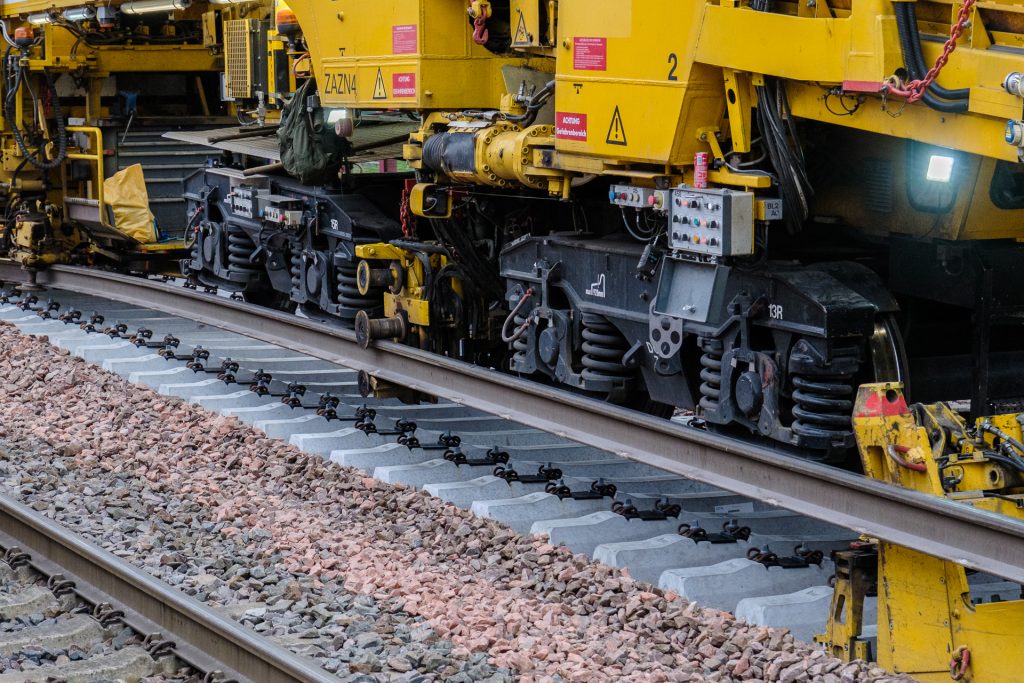
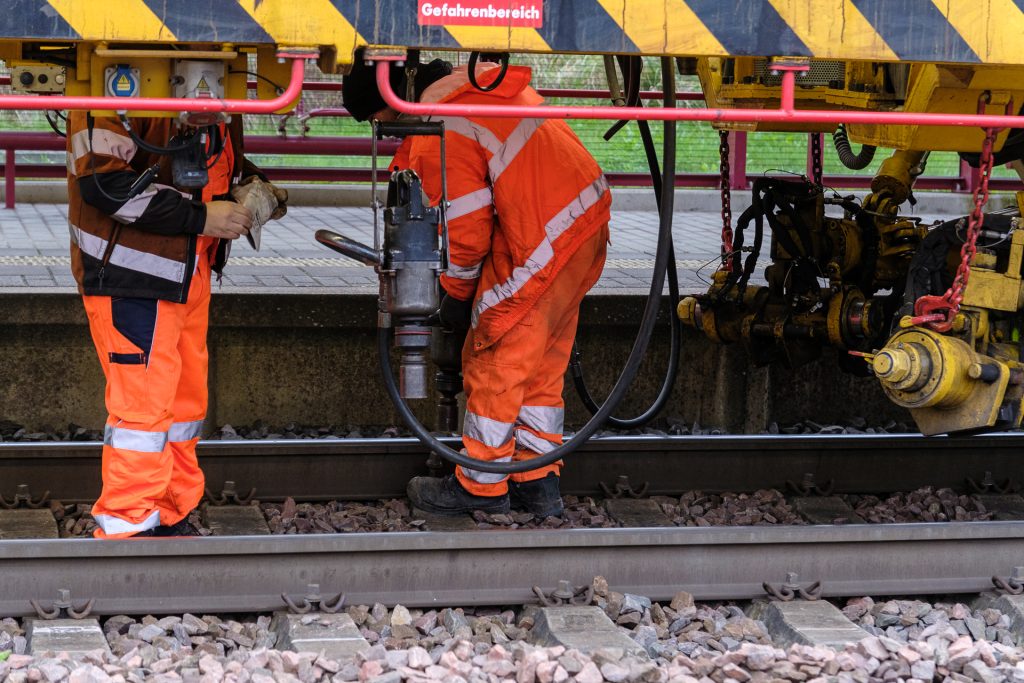
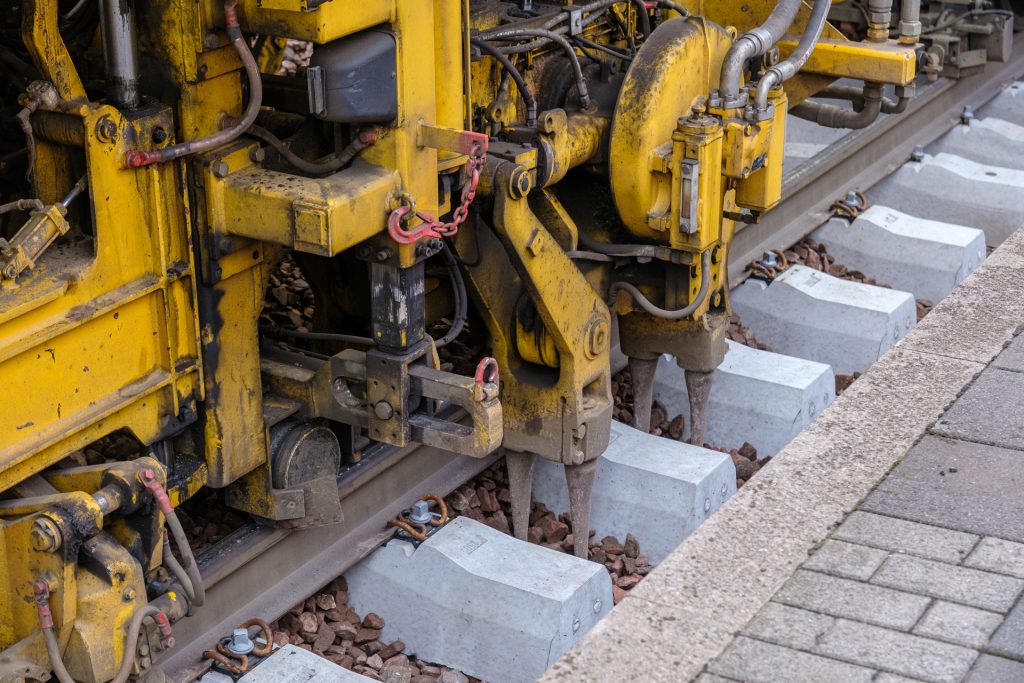
At the end of this early renewal operation, the CFL is applying its strategic priority of efficiency by promoting the recycling of materials and the circular economy. The sleepers removed from the network are crushed to recover and recycle the concrete and steel scrap separately. The intermediate bearings are the only element that cannot be reused. They are disposed of by a waste management company in Luxembourg.
How is the Luxembourg rail network maintained?
From the initial observations to the confirmation of the deterioration of the sleepers on the Luxembourg – Dippach-Reckange – Rodange – Athus and Longwy lines respectively, the CFL had taken specific measures, including increasing the frequency of individual checks on the state of the sleepers (every six months, then every four months, then every month), in particular as part of a special round with a specific visual check. The maximum speed had also been reduced to 100 km/h from July 2024 between Bascharage-Sanem and Dippach-Reckange because of the wear of the sleepers on this section.
The detection of the manufacturing defect is the result of the CFL Infrastructure Manager’s maximum safety and quality approach, which involves regular checks on the rail network by its maintenance teams: visual inspection of the tracks (twice a year), inspection by measurement train (twice a year) and ultrasonic inspection train (twice a year). It should be noted that these rounds are supplemented by the six-monthly inspection of each switch, during which more than 100 inspection points are assessed per switch. The work carried out by the maintenance teams also includes ballast inspections, to identify any defects in this part of the track.
These checks make it possible to determine and adjust the schedules for the various maintenance and renewal operations scheduled each year. For 2024, the programme of renewal and maintenance work included, for example, the renewal of more than 13 kilometres of track, the laying of 20,000 sleepers and the installation of 25 points.
